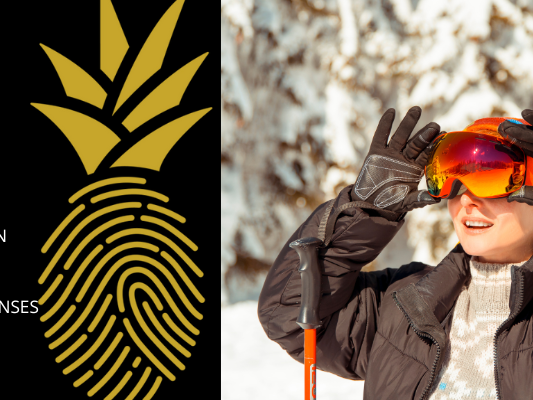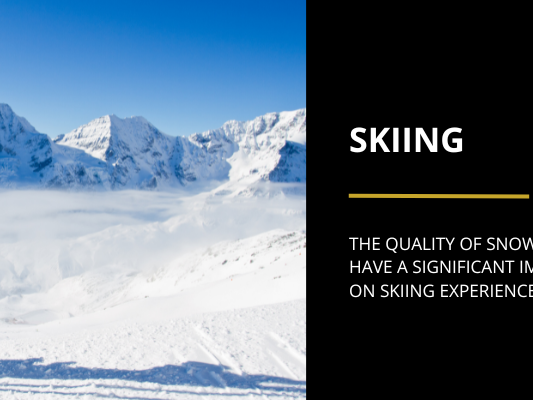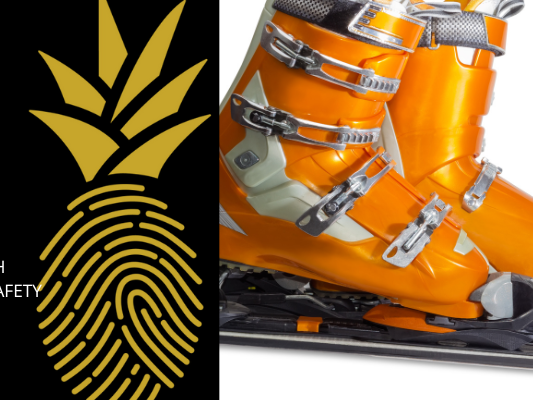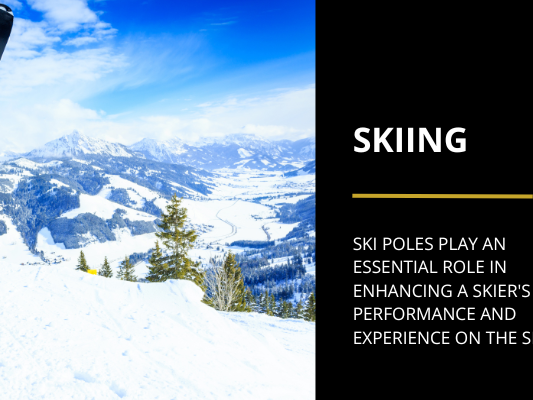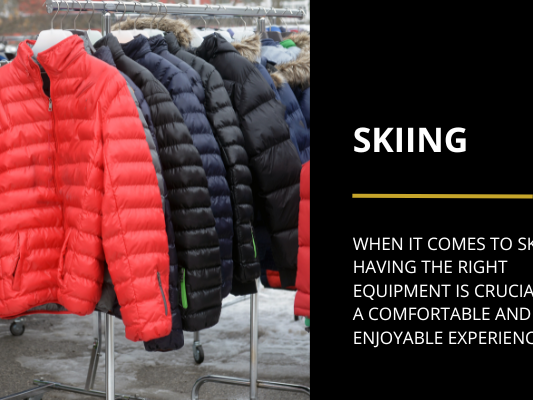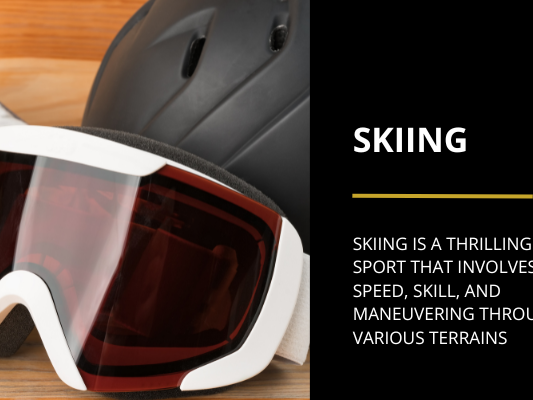Skiing is a popular winter sport that requires the right selection of equipment to ensure a comfortable and enjoyable experience on the slopes. It is essential to understand the various components of skiing gear and invest in high-quality products to optimize your performance, safety, and comfort. This article will help you navigate the world of skiing equipment, from skis and boots to bindings, poles, and clothing.
To make the best choices, consider factors such as your skiing ability, personal preferences, and specific terrain conditions. Additionally, pay attention to the materials used in ski equipment, as they impact durability, weight, and overall performance. By selecting the right combination of gear, you can enhance your skiing experience while also staying protected and comfortable on the mountain.
As you read further, we will cover various aspects of skiing equipment and discuss the importance of choosing the right products based on your needs. With the insights provided in this article, you will be better equipped to make informed decisions while shopping for your ski gear.
Blog Takeaways
- Understanding the various components of skiing equipment ensures optimized performance and safety.
- Considering personal preferences, skill levels, and terrain conditions are essential when selecting gear.
- Quality materials and well-known brands enhance durability and overall skiing experience.
Understanding Skiing Equipment
Skiing is an exciting winter sport, enjoyed by many around the world. To fully appreciate the experience, it is essential to have the right skiing equipment. In this section, we'll discuss some of the critical components of ski gear to help you make informed decisions when selecting equipment.
Firstly, it's crucial to choose the appropriate type of skis that align with your skiing style. There are various categories, including all-mountain skis for groomed and powder snow mix, freeride skis for backcountry adventures, race skis for downhill and slalom competitions, and freestyle skis for performing tricks at snow parks. Make sure to consider factors such as ski design, width, and length when making your selection (Ski Butlers).
Next, ski boots play a vital role in your performance and comfort on the slopes. Spend time trying on different models and sizes, ensuring that your feet feel secure but not overly tight. Your ski boot's flex rating should correspond with your skill level and preferred skiing terrain, as it determines the balance between support and maneuverability.
When it comes to ski poles, they can enhance your balance and aid in propelling yourself across flat terrain. To choose the right length, flip the pole upside down and hold it just below the basket. The correct size should create a 90-degree angle with your arm when you stand upright on a flat surface.
Additionally, it's essential to dress appropriately for the cold conditions of skiing. This includes wearing high quality, thermal ski socks, insulated and waterproof ski pants, and jackets that can help regulate body temperature and protect you from the elements. A helmet is also necessary for safety and warmth when skiing, as well as a good pair of ski gloves to keep your hands warm and dry. Check out Outdoor Gear Lab for tested and recommended ski gear options.
Finally, consider other accessories, such as goggles or sunglasses, that shield your eyes from UV rays and harsh glare, neck warmers, or buffs that cover your face and neck in cold conditions, and the appropriate ski wax to improve glide and performance.
By understanding skiing equipment and investing in quality gear, skiers can optimize their on-slope experiences in terms of enjoyment, comfort, and safety. Remember to choose equipment that best matches your skiing style and skill level, and fully explore your options before making any purchases.
Choosing The Right Skis
When it comes to skiing, having the right equipment can make all the difference in your experience. One of the most critical pieces of gear is your skis. Skis come in various types and designs, each suited for a specific kind of terrain or skiing style. This section will provide information on how to choose the right skis, focusing on all-mountain skis, rocker and camber, and performance factors.
All-mountain skis are popular among skiers due to their versatility, as they can handle various types of terrain, from groomed runs to powder days. These skis often feature a mix of rocker and camber, ensuring stability and carve-ability. Rocker signifies a ski's upward curve at the tip and tail, while camber refers to the ski's arch that touches the snow in the middle when laid flat. Combining these two elements results in skis that can initiate turns with ease while maintaining grip on groomed surfaces and float in deeper snow.
To find the right skis that fit your skiing style, consider the ski's design and performance characteristics. A versatile all-mountain ski should have a waist width ranging between 90-110mm, enabling it to handle multiple snow conditions with ease. Skiers who predominantly ski groomed terrain may prefer a narrower waist width for quicker edge-to-edge transitions, while those who ski powder more often might opt for a wider waist width for increased floatation.
Reading ski reviews can also help identify the appropriate skis for you. Reviews provide insights on a ski's performance in various conditions, enabling you to make an informed decision about the right pair. Take note of factors such as turn initiation, carving ability, and stability at high speeds when reading reviews, as these factors contribute to a ski's overall performance.
In conclusion, finding the right skis involves considering various factors, including ski type, design, and performance. All-mountain skis with a mix of rocker and camber are a popular and versatile choice for many skiers. By considering the ski's waist width, reading reviews, and factoring in your personal skiing preferences, you can find the perfect pair of skis to enhance your skiing experience.
Importance Of Ski Boots
Ski boots play a crucial role in connecting skiers to their skis. They need to offer a comfortable fit while providing maximum power transfer and control to efficiently carve through various terrain. The perfect ski boot should be lightweight and have a well-cushioned liner for all-day comfort.
A comfortable ski boot ensures that even after extensive hours of skiing, your feet remain relaxed and pain-free. As mentioned on Mechanics of Skiing, softer flex boots are recommended for beginner or intermediate skiers, as they provide more comfort and forgiveness during skiing motions.
On the other hand, expert skiers and racers often opt for stiffer boots. According to Ski Mag, a true 130 flex alpine boot offers more responsiveness and efficiency for experienced skiers, even though it may lack the warmth and comfort of a softer boot.
The liner of a ski boot plays a significant role in overall comfort. High-quality liners offer proper insulation and cushioning, ensuring a cozy fit and keeping the feet warm in cold temperatures. Some ski boots even come with customizable liners that can be molded to the exact shape of a skier's foot.
It's vital for ski boots to be lightweight, as it allows for easier maneuverability and less fatigue on the slopes. Boots with lightweight construction are also preferred for alpine touring, where skiers need to hike and climb alongside skiing. Outdoor Gear Lab suggests that advanced ski boots often feature walk modes for more comfortable travel when walking or ascending.
In conclusion, ski boots are an essential piece of skiing equipment due to their significant impact on comfort, control, and performance. A well-fitting, lightweight ski boot with an appropriate flex and high-quality liner ensures a pleasurable skiing experience for all skill levels.
Influence Of Bindings
Ski bindings play a crucial role in both performance and safety while skiing. They are the direct link between skier and ski, and have a significant impact on carving, stability, and overall control on the slopes.
When it comes to carving, the type of ski binding chosen can directly influence a skier's ability to make sharp turns and maintain control at high speeds. Alpine ski bindings, which are specifically designed for downhill skiing on groomed runs, are commonly used for such purpose. They provide the ideal balance of control and power transfer, allowing skiers to carve confidently on various terrains.
Stability on the slopes is determined in part by the proper functioning of the ski bindings. Bindings need to reliably release during falls, preventing injuries while also maintaining a firm grip on skiers' boots when required. Ski brakes are an important feature of bindings, as they ensure that skis do not run away in case of a fall. It is essential to choose the right size and style of binding, as well as correct release settings, to optimize stability and performance.
There are different types of bindings for various skiing styles and preferences, such as backcountry skiing or alpine touring. Tech bindings, for example, offer lightweight efficiency while being able to closely replicate the downhill performance of traditional frame bindings. It is important to carefully consider factors like skiing style, experience level, and personal preferences when selecting the ideal binding to ensure maximum influence on carving and stability.
The Role Of Ski Poles
Ski poles play an essential role in enhancing a skier's performance and experience on the slopes. From providing balance and stability to aiding propulsion and maneuverability, these essential pieces of skiing equipment serve multiple functions.
First and foremost, ski poles provide essential support and balance, especially during downhill skiing. They act as a third point of contact with the ground, ensuring that skiers can maintain proper body positioning and navigate through various terrains smoothly.
Another key function of ski poles is to facilitate propulsion during cross-country skiing. Skiers utilize the poles to push themselves forward, allowing for efficient and energy-saving movement across flat and uphill sections of the trail.
Aside from these primary functions, ski poles contribute to a skier's comfort and control on the slopes. A well-designed grip plays a vital role in providing skiers with a secure and comfortable hold on their poles, allowing for improved control and reduced strain on the hands and wrists. Furthermore, ski poles are essential in aiding maneuverability, as they help with turning and navigating through obstacles.
In conclusion, ski poles serve as indispensable tools for skiers of all levels. Whether engaging in downhill skiing or cross-country skiing, their benefits regarding balance, propulsion, grip, and comfort are undeniable. Understanding and utilizing ski poles appropriately can significantly enhance a skier's overall experience, leading to safer and more enjoyable times on the slopes.
Decoding Ski Clothing
When it comes to skiing, having the right equipment is crucial for a comfortable and enjoyable experience. Here, we'll break down the essential ski clothing items and materials to look for in order to remain warm and protected on the slopes.
Ski jackets play an important role in keeping you warm and dry. A high-quality ski jacket often combines a waterproof and breathable outer shell with insulation. Material like Gore-Tex is preferred for its excellent waterproofing and breathability features, ensuring comfort throughout the day.
Ski pants are essential to keep your lower body warm and dry. They come in a variety of styles, from regular pants to bib pants. Bib pants offer higher coverage with the added suspenders, ensuring snow doesn't enter your pants while skiing. Brands like Helly Hansen offer durable ski pants with waterproof capabilities.
Layering is key in skiing attire. A good base layer is critical for moisture-wicking and insulation. Smartwool is a popular choice due to its ability to regulate temperature and wick away moisture. A midlayer, such as a fleece or wool top, provides additional insulation to keep warm during cold weather.
Gloves or mittens are necessary to protect your hands from the cold and wet conditions. Investing in a pair of high-quality, waterproof gloves can make skiing more comfortable while ensuring your hands stay warm and dry.
Helmets don't only provide critical head protection in case of falls but also help keep your head warm. Finding a well-fitting, certified ski helmet ensures both safety and comfort while skiing.
In summary, a well thought out selection of ski clothing can greatly enhance your experience on the slopes. Prioritizing waterproof, breathable materials and focusing on layering will ensure a comfortable, warm, and enjoyable skiing adventure.
Significance Of Protective Gear
Skiing is a thrilling sport that involves speed, skill, and maneuvering through various terrains. To ensure a safe and enjoyable experience, it is critical to wear the right protective gear that not only offers comfort but also provides optimal protection against potential injuries.
One of the essential pieces of protective equipment for skiers is the helmet. Wearing a helmet significantly reduces the risk of head injuries in case of falls or collisions. Modern ski helmets are lightweight and comfortable, allowing skiers to perform at their best without compromising safety. It is crucial to choose a helmet that fits snugly and is designed to withstand the specific conditions of the chosen ski activity.
Goggles play a vital role in skiing as they protect the eyes from wind, snow, and debris, while also providing better visibility on the slopes. Ski goggles should offer a wide field of view, have anti-fog features, and provide adequate UV protection. Moreover, when selecting goggles, it is essential to ensure their compatibility with the helmet for a secure and comfortable fit.
A helmet-compatible hood is an additional feature that can provide extra protection to the head and neck area, especially in extreme weather conditions. These hoods are designed to fit comfortably over both the helmet and goggles, ensuring warmth and shielding the skier from the elements.
Safety should be a primary concern when skiing, and investing in high-quality protective gear is the key to minimizing risks and enhancing the overall experience. By wearing the right helmet, goggles, and helmet-compatible hood, skiers can confidently tackle various slopes while maintaining their safety and comfort.
Selecting The Right Materials
When choosing ski equipment, it's crucial to select the right materials for optimal performance and comfort. In this section, we'll discuss three popular materials commonly used in ski gear: polyester, merino wool, and carbon.
Polyester is a synthetic fabric known for its durability and moisture-wicking properties. It is often used in ski clothing, such as jackets and pants, where it can provide ample insulation and warmth while allowing for breathability and rapid moisture evaporation. One major advantage of polyester over its natural counterparts is that it generally maintains its insulating properties even when wet. This characteristic ensures that skiers remain comfortable and dry throughout their skiing sessions.
Merino wool, a natural fiber derived from the merino sheep, has risen in popularity among skiers due to its exceptional breathability, insulation, and moisture-wicking properties. Unlike traditional wool, merino fibers are finer and softer, providing excellent comfort without the itchiness associated with coarser wool types. Merino wool is commonly used in base layers and socks, ensuring that the skier's body stays warm and dry regardless of the weather conditions. Moreover, merino wool boasts natural antimicrobial properties, helping to reduce odors caused by sweat.
Carbon is a lightweight and strong material often used in the construction of ski equipment, such as poles and ski constructions. It offers excellent stiffness and responsiveness, enabling skiers to maintain better control and performance on the slopes. Carbon is particularly popular among advanced and expert skiers who require lightweight yet sturdy gear for aggressive skiing.
To sum it up, selecting the right materials is a crucial factor when preparing for skiing. Polyester offers durability and moisture-wicking abilities, making it suitable for insulation layers. Merino wool brings breathability, insulation, and comfort in base layers and socks. Lastly, carbon provides strength and stiffness to enhance performance in ski equipment. By understanding the properties of each material, skiers can make informed decisions and select gear that will best suit their needs on the mountain.
Convenience Of Multi-Functional Equipment
Skiing enthusiasts understand the importance of having the right gear to tackle different terrains and snow conditions. Multi-functional equipment plays a vital role in providing convenience and adaptability for skiers, whether it's for all-mountain, backcountry, or resort skiing.
One of the essential multi-functional skiing gears is the versatile all-mountain ski. These skis are designed to handle various snow conditions, including packed snow, powder, and icy surfaces. They perform well on groomers, bumps, frontside, and off-piste runs, making them an excellent choice for skiers who want one ski suitable for different snow conditions and terrains.
In addition to all-mountain skis, investing in a backcountry setup can be advantageous for those who venture into off-piste and powder snow. This includes a reliable avalanche safety equipment, such as the Mammut Avalanche Airbag 3.0, which can be a lifesaver in emergencies. Backcountry skiers also benefit from lightweight and packable tools like collapsible probes and folding shovels that can be easily carried and accessed when needed.
Another handy gadget that brings convenience is the Garmin Fenix 7 Solar, a smartwatch tailored for skiing activities. It helps skiers track their progress on the mountain and monitor vital data such as altitude, location, and speed, making it the ultimate skiing companion to have on their wrist.
While some skiers prefer specific gear setups for snowboarding or downhill skiing, selecting versatile equipment is a practical choice for those who engage in various snow sports. Multi-functional tools offer increased adaptability and ease of use, making skiing adventures more enjoyable and hassle-free, regardless of the chosen mountain, resort, or snow conditions.
Top Brands And Products
When it comes to skiing, having the right gear is of utmost importance for a safe and enjoyable experience. Several trusted ski brands offer top-quality products that cater to both men and women.
Salomon is a well-known brand that offers a variety of skiing equipment, including skis, boots, and bindings. Known for their innovative designs and reliable performance, Salomon products have consistently received excellent consumer reviews.
Smith is another popular brand, predominantly known for their helmets and goggles. With cutting-edge designs and materials, Smith provides high-quality products that ensure comfort, safety, and great visibility on the slopes. Ski Magazine's Best Skis of 2024 Gear Test highlights their achievements in producing top-tier equipment.
Besides these two reputed brands, other companies such as Patagonia, Völkl, and Blizzard have also been making a significant impact in the world of ski gear. As mentioned in DMARGE's article, Patagonia is a widely recognized brand for mountain outerwear, designed to keep skiers warm and dry on the slopes. Originating from California, Patagonia has been a consistent choice for outdoor enthusiasts.
Völkl is a major player in the ski manufacturing industry, known for creating powerful and precise carving skis. As mentioned by Switchback Travel, popular models such as the Mantra, Kendo, and Blaze are favorites among avid skiers.
Blizzard is another notable brand, with their All-mountain Enforcer and Black Pearl models garnering praise from GearJunkie. These skis are known for their excellent performance across different snow conditions, offering great value for money.
In summary, top ski gear brands like Salomon, Smith, Patagonia, Völkl, and Blizzard have been providing skiers with high-quality equipment for a comfortable and safe skiing experience. By investing in these brands, both men and women can rest assured they're using some of the best equipment available in the market.
Frequently Asked Questions
What essential ski gear should I invest in?
It is essential to invest in the right skiing equipment for a successful ski trip. Key items include clothing, safety gear, skis, bindings, boots, and eyewear. Clothing should keep you warm and dry, while safety gear like helmets and ski goggles protect you from injury. Choose appropriate skis, bindings, and boots based on your skiing level and style. Additionally, consider quality goggles or sunglasses for eye protection.
Which ski brands are highly recommended?
Several ski brands are known for their quality, performance, and innovation in the skiing industry. Some highly recommended brands include Salomon, Atomic, Rossignol, K2, and Head. These brands have a wide range of ski equipment, clothing, and accessories that cater to different skill levels and preferences.
What state-of-the-art ski technology should I consider?
There are various state-of-the-art ski technologies to enhance your skiing experience. Some notable advancements include rocker/camber ski designs, high-performance ski boots with customizable fit systems, and lightweight yet strong ski materials like carbon fiber. Additionally, smart electronic devices like Bluetooth ski speakers can help you communicate hands-free while on the slopes.
What are the most reliable materials for ski equipment?
Ski equipment is made from various materials designed to optimize performance and durability. Typical materials used in skis include wood, fiberglass, carbon fiber, and metal laminates. Ski boots are primarily made from plastic, with polyurethane being the most common material offering a balance of stiffness, durability, and fine-tuning fit. When choosing ski equipment, prioritize quality materials from reputable brands to ensure reliability and longevity.
How to choose skis suitable for my skill level?
To select the right skis for your skill level, consider factors like ski length, width, and flex. Beginner skiers should opt for shorter and softer-flex skis for easier control and turning, while intermediate skiers can choose medium-flex skis offering more stability at higher speeds. The skier's boot flex should also correspond to their skill level. Advanced and expert skiers should opt for stiffer and longer skis for better control in various snow conditions.
What are must-have accessories for men while skiing?
Some must-have skiing accessories for men include proper ski socks, gloves or mittens, base layers, mid-layers, and a neck gaiter or balaclava for extra warmth. A well-fitted helmet and quality ski goggles are crucial for safety and comfort. Don't forget a ski-specific backpack for storing snacks, water, and extra clothing.



